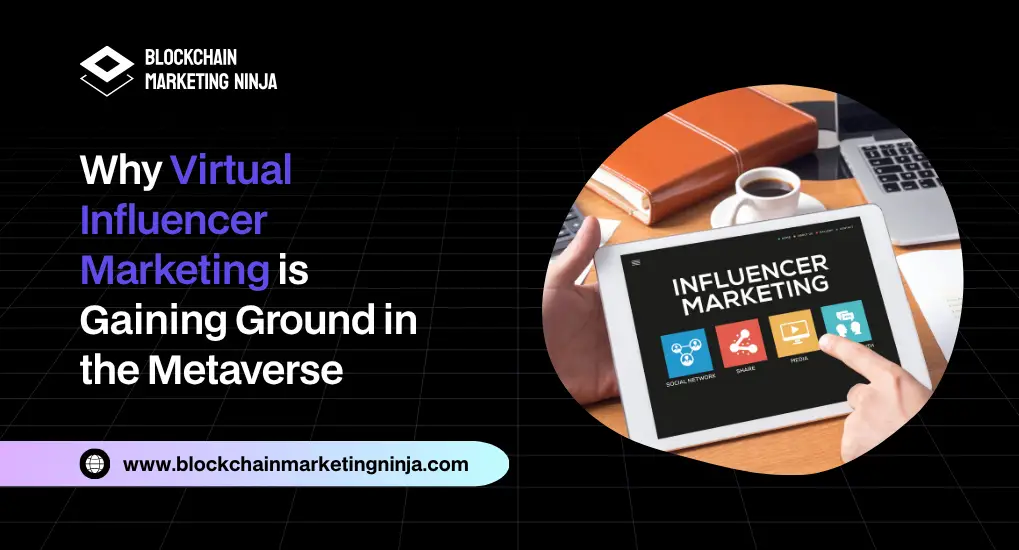The rise of virtual influencer marketing represents this disruptive digital innovation, combining technology with social interaction. As the metaverse crowds are pulling in more, the relevance of virtual influencers, digitally created avatars that act to transcend brands and personalities into the immersive outer space of the metaverse, is on the rise, too. These types of influencers can capture users across several Metaverse advertising platforms, enabling brands to take advantage of creative ways to reach target demographics. As one of the torchbearers of a paradigm shift in traditional marketing strategies, virtual influencers help capture the imagination of users across more interactive virtual worlds.
Understanding Virtual Influencer Marketing
Virtual influencers are computer-generated personas who interact with consumers and audiences on traditional social media platforms, different from the original influencers in the real world. Unlike human influencers, virtual influencers can be programmed, and they have controlled personas, stories, and digital identities in the metaverse. This level of control is what makes them perfect for brands wanting to reinforce a certain image while giving consumers a familiar experience. In the realm of digital and social media marketing, virtual influencer marketing offers interesting possibilities for brands, allowing them to combine creativity and technology by creating innovative ways to communicate and engage.
Why Virtual Influencers are Gaining Popularity in the Metaverse?
The associated metaverse is a blend of AI, gaming, and social media, which enables virtual influencers to emerge. This is who they target, providing a level of customization never seen before, beyond human customization. Virtual influencers create an enhanced storytelling experience that captivates users and often draws them into narratives within multiple layers that traditional influencers cannot deliver. Not only do they have the brand potential to utilize a virtual influencer (which gives brands full control over branding, sparking creativity, and eliminating the risks that come with a human influencer. Moreover, virtual influencers can be cheaper in the long term and offer a way to reach a wider audience on a scalable basis. By partnering with a blockchain influencer marketing agency, brands can further optimize these efforts, allowing them to maximize the benefits of this innovative marketing strategy.
Also read: How Our Influencer Marketing Amplify Your Blockchain Brand?
The Benefits of Virtual Influencer Marketing for Brands
1. Brand Control:
Metaverse marketing agency have absolute creative control over virtual influencers, unlike human influencers, whose actions can be unpredictable. Brands can invent, shape, and alter dialogue around core values and messages across character narratives.
2. Audience Engagement:
These influencers are ideally suited to engage younger, tech-savvy audiences that spend considerable time in digital environments. Their designs look different and are relatable, and that causes attraction and deeper engagement.
3. Consistency and Longevity:
Virtual influencers have established a cohesive brand identity over time. Virtual characters, on the other hand, do not have the same potential to grow or change as human influencers.
4. Data and Analytics:
Metaverse platforms provide brands with real-time insights and performance metrics, enabling data-driven decisions. This allows for responsive adjustment of Metaverse advertising strategies for optimal performance.
5. Scalability:
As these Virtual influencers can also be used to reach a wider demographic with no hindrances, they are ideal for companies looking to grow their market share as they can reach a much larger audience than an influencer would be able to from just one geographical base. Brands interested in pursuing these prospects can consider metaverse marketing services to help create strategies for virtual influencer marketing.
Also read: 5 Ways How Influencer Marketing Can Reshape Your Blockchain Efforts
How to Get Started with Virtual Influencer Marketing in the Metaverse?
1. Identify the Right Virtual Influencer:
Pick virtual influencers that further your brand’s values and relate to your audience. Avoid frat-boy archetypes or brat-girl cliches (play it straight, mixed with humor) and keep things personable, with personality, design, and backstory for a good match.
2. Platform Selection:
Decide where the virtual influencers will appear. Some include VR platforms, social media channels, and in-game experiences. Operate a content strategy that reflects both the virtual influencers and your target audience. Determine what types of content (e.g., promotional campaigns, interactive experiences) you plan to produce to maximize your impact.
3. Develop a Strategy:
Design a content strategy that speaks to both the virtual influencers and your intended audiences. Detail the content forms (e.g., advertising campaigns, interactive experiences) that will be created.
4. Collaboration and Partnerships:
Partner with metaverse platforms, video games, or virtual influencer agencies to release your Virtual influencer campaigns. Get aligned with a blockchain influencer marketing agency and leverage them to have marketing strategies to reach the right customers and audience.
5. Budgeting and ROI:
Make sure you dedicate the right resources to your Metaverse influencer marketing campaigns and put a clear plan in place to measure success. Assess the performance of your campaigns over time by monitoring important metrics like engagement rates, conversions, and general return on investment (ROI).
Closing Words
Meta influencer marketing in the metaverse – it is important already as a consequence of technology progress and changes in consumption habits. The interactive elements of virtual influencers in the metaverse will represent an opportunity for brands to create new campaigns with the potential to spread organically across social media. With the correct usage of virtual influencers, brands can enhance their marketing process while developing a relationship with the user in this new digital world.
